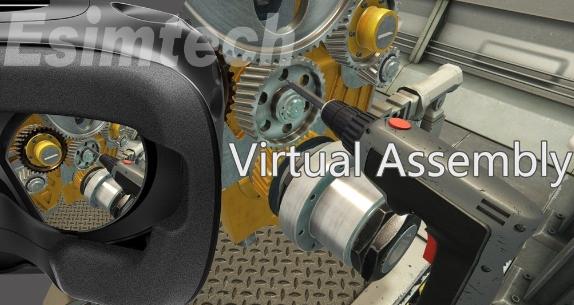Demystifying the Diesel Engine: A Step-by-Step Guide to Assembly and Disassembly with New Animation Solutions

The diesel engine, a workhorse of industry and transportation, is known for its durability and power. But beneath the hood lies a complex web of components working in perfect harmony. This guide delves into the world of diesel engines, providing a step-by-step walkthrough of disassembly and assembly, broadening your understanding of this remarkable machine.
Safety First!
Before diving in, prioritize safety. Diesel engines involve heavy components and flammable materials. Always ensure you have the proper tools, a designated workspace, and wear appropriate safety gear, including gloves, eye protection, and sturdy footwear. If you're a beginner, consider working alongside a qualified mechanic for guidance.
Disassembly (Taking it Apart):
1. Preparation: Drain the engine oil and coolant following the manufacturer's instructions. Disconnect the battery and label electrical wires for reassembly.
2. Intake and Exhaust Systems: Disconnect the air intake and exhaust manifolds, following the removal of any clamps or brackets.
3. Fuel System: Carefully detach fuel lines, ensuring proper drainage and labeling for reconnection. Secure any loose components to prevent fuel leaks.
4. Cooling System: Disconnect radiator hoses and drain any remaining coolant. Remove the thermostat housing and detach the water pump if necessary.
5. Head Assembly: Remove the valve cover, exposing the valvetrain. Loosen the head bolts in a specific sequence (refer to a service manual) and carefully lift the cylinder head.
6. Block and Pistons: Depending on the engine design, you might need to remove the timing belt/chain and crankshaft pulley. Once internal access is achieved, proceed with removing the pistons and connecting rods, following the manufacturer's recommended procedure.
Assembly (Putting it Back Together):
1. Block and Pistons: Carefully insert the pistons into their cylinders, ensuring proper ring alignment. Reassemble the connecting rods and tighten the fasteners to specified torque values.
2. Head Assembly: Clean and inspect the cylinder head and gasket surface. Use a new head gasket and carefully lower the head onto the engine block. Tighten the head bolts in the reverse order of loosening, following the recommended torque sequence and specifications.
3. Timing System: Reinstall the timing belt/chain and tensioner as per the manual. Double-check all timing marks to ensure proper alignment.
4. Cooling System: Reattach the water pump, thermostat housing, and radiator hoses. Refill the cooling system with the recommended coolant mixture.
5. Fuel System: Reconnect the fuel lines, ensuring proper fit and avoiding leaks. Tighten all clamps securely.
6. Intake and Exhaust Systems: Reinstall the intake and exhaust manifolds, following the proper tightening sequence for the bolts and clamps.
7. Final Touches: Reconnect all electrical wires, following your labels. Refill the engine oil and reconnect the battery. Double-check for any loose components or leaks.
New Solution: Animation to the Rescue!
While this guide offers a step-by-step approach, visualizing the entire disassembly and assembly process can be immensely helpful. This is where new animation solutions come into play. Several online resources and training materials now incorporate 3D animation specifically designed to showcase the intricate steps involved in diesel engine disassembly and assembly. These animations can be particularly beneficial for:
l Visual Learners: Following a visual representation of the process can solidify understanding for those who learn best by seeing.
l Detailed Procedures: Animations can depict complex procedures in a clear and concise manner, highlighting the sequence of steps and component interactions.
l 360° Views: Animations offer the ability to rotate and zoom in on specific components, providing a more comprehensive understanding of their placement and function within the engine.
By incorporating these animations alongside traditional service manuals, you can gain a deeper and more nuanced understanding of the disassembly and assembly process.
Remember:
l Refer to a service manual specific to your engine model for detailed instructions, torque specifications, and safety precautions.
l This guide provides a general overview. The complexity of disassembly and assembly can vary depending on the engine type and specific model.
l If you're unsure about any step, consult a qualified mechanic to avoid damaging the engine.
By understanding the inner workings of a diesel engine, you gain a deeper appreciation for its engineering marvel. This step-by-step guide equips you with the basic knowledge for disassembly and assembly, but always prioritize safety and refer to professional resources when needed.
- Art
- Causes
- Crafts
- Dance
- Drinks
- Film
- Fitness
- Food
- Jeux
- Gardening
- Health
- Domicile
- Literature
- Music
- Networking
- Autre
- Party
- Religion
- Shopping
- Sports
- Theater
- Wellness
